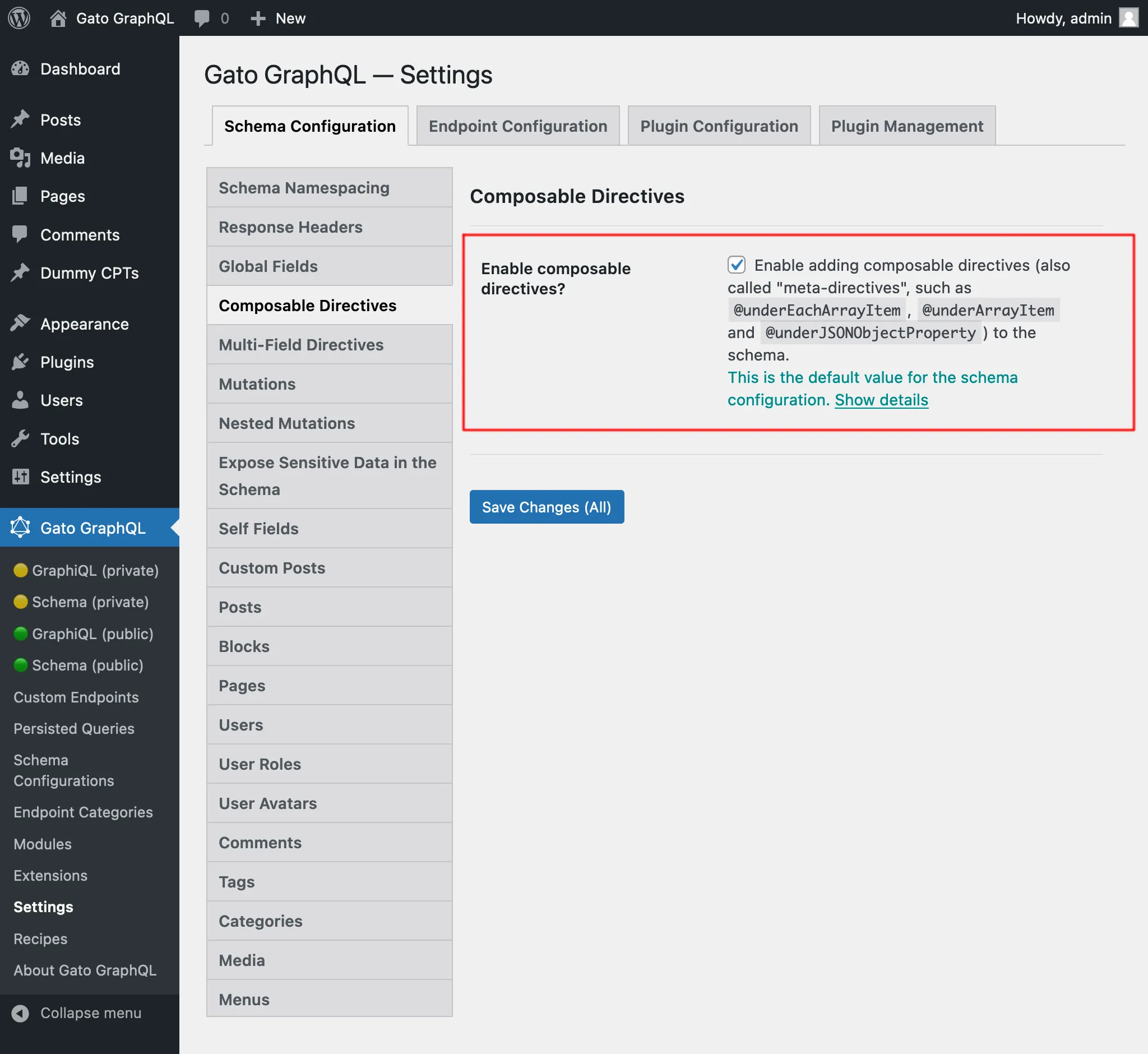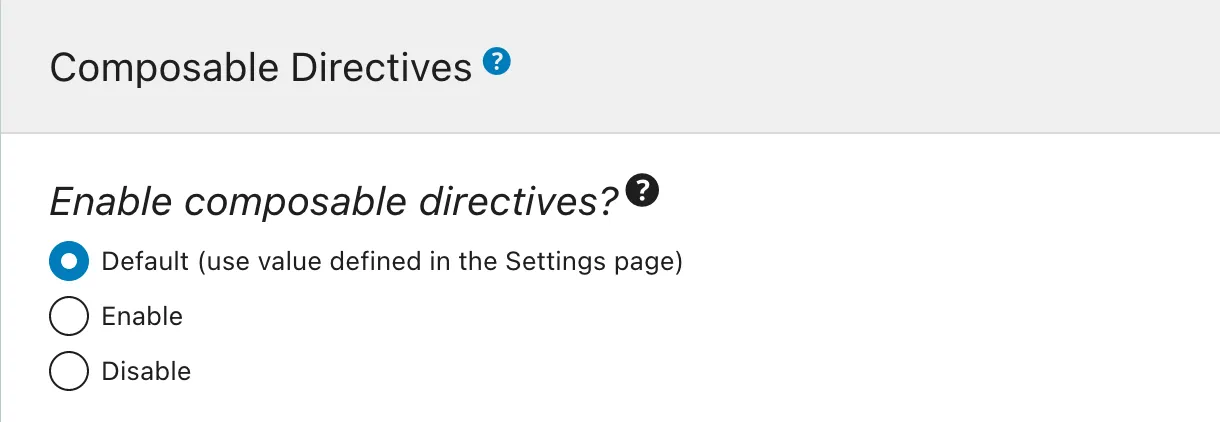Using multi-field directives
A multi-field directive is a directive that can be applied to multiple fields, instead of only one. When enabled, an argument affectAdditionalFieldsUnderPos is added to all directives, where the relative positions of additional fields to apply the directive to can be specified.
For instance, in the following query, directive @strTranslate is applied only to field content:
{
posts {
excerpt
content @strTranslate
}
}Field excerpt can also be applied directive @strTranslate, by adding the directive argument affectAdditionalFieldsUnderPos with value [1] (as 1 is the relative position of field excerpt from directive @strTranslate):
{
posts {
excerpt
content
@strTranslate(
affectAdditionalFieldsUnderPos: [1]
)
}
}The number of fields to add is not limited. In this query, the dateStr is also being translated:
{
posts {
dateStr
excerpt
content
@strTranslate(
affectAdditionalFieldsUnderPos: [1, 2]
)
}
}The field over which the directive is naturally applied (such as content in all queries above) must not be specified on the argument.
On the query above, the relative positions from directive @strTranslate to the previous fields are:
- Position
2:dateStr - Position
1:excerpt - Position
0:content<= It's implicit, always applied
Use cases
There are two main use cases for this feature:
- Performance
- Extended functionality
Performance
For directives that execute calls to external APIs, the lower number of requests they execute, they faster they will be resolved.
That's the case with directive @strTranslate, which connects to the Google Translate API. Normally, to translate fields content and excerpt from a list of posts, the query would be this one:
query {
posts {
excerpt @strTranslate
content @strTranslate
}
}By adding @strTranslate twice, this query executes two requests to the Google Translate API (one to translate all values for excerpt, one for all values for content).
Thanks to the Multi-Field Directives feature, the query below also translates all values for both content and excerpt fields, but instead it executes a single request to the Google Translate API:
query {
posts {
excerpt
content
@strTranslate(
affectAdditionalFieldsUnderPos: [1]
)
}
}Extended Functionality
Directives receiving extra fields can provide additional calculations.
For instance, directive @export normally exports the value of a single field, such as the logged-in user's name:
query GetLoggedInUserName {
me {
name @export(as: "userName")
}
}Through argument affectAdditionalFieldsUnderPos, @export can receive multiple fields, and will then export a dictionary containing those fields as entries:
query GetLoggedInUserNameAndSurname {
me {
name
surname
@export(
as: "userProps"
affectAdditionalFieldsUnderPos: [1]
)
}
}@export will now produce the following value on variable $userProps
{
"name": "Leo",
"surname": "Loso"
}Configuration
To enable or disable multi-field directives in the GraphQL schema, go to the "Multi-Field Directives" module on the Settings page, and tick/untick the checkbox for Enable multi-field directives?:

To enable or disable multi-field directives on a specific endpoint, select the desired option in block "Multi-Field Directives" from the corresponding Schema Configuration:

